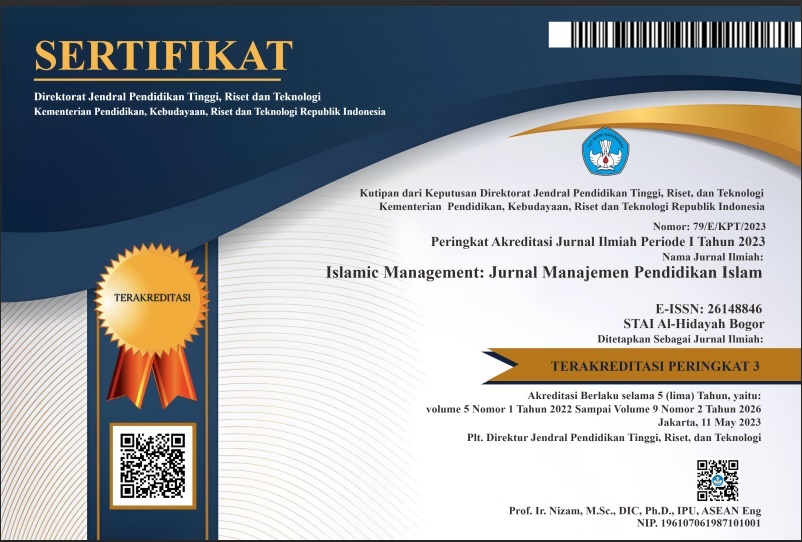THE ROLE OF ISLAMIC RELIGIOUS EDUCATION IN PREVENTING BULLYING BEHAVIOR AT SCHOOL
DOI:
https://doi.org/10.30868/im.v8i01.7786Keywords:
Islamic Religious Education, Bullying, PsychologyAbstract
Bullying is a serious problem in the educational environment that can damage students' psychology and create an unhealthy learning atmosphere. As the main instrument in character education, Islamic Religious Education (PAI) has great potential to prevent and overcome bullying behavior. This study aims to analyze the role of PAI in building students' characters that respect the values of compassion, tolerance, and responsibility. A descriptive qualitative approach was used to understand the implementation of religious values in the context of formal education. Data were collected through classroom observation, interviews with PAI teachers, and curriculum analysis. The results showed that the implementation of Islamic values through PAI was able to increase students' empathy and create a harmonious school environment. The study also found that PAI teaching that is integrated with daily life is more effective than teaching methods that are only theoretical. The recommendations of this study include teacher training, curriculum updates, and community-based holistic approaches to support bullying prevention in schools.
References
Al-Ghazali, Imam. (2004). Ihya Ulumuddin: Akhlak dalam Islam. Jakarta: Pustaka Azzam.
Rahman, A. (2017). "Pendidikan Karakter dalam Perspektif Islam". Jurnal Pendidikan Islam, 5(2), 122-135.
Sugiyono. (2019). Metode Penelitian Pendidikan. Bandung: Alfabeta.
Yusuf, M. (2020). "The Role of Islamic Education in Preventing Social Issues in Schools". Journal of Islamic Studies, 12(1), 45-62.
Zainuddin, A. (2018). "Integrasi Pendidikan Karakter dalam Kurikulum PAI". Jurnal Pendidikan dan Kebudayaan, 10(3), 233-245.
Downloads
Published
How to Cite
Issue
Section
Citation Check
License
Copyright (c) 2025 Ahmad Soleh Mustofa, Subakri Subakri, Gunawan Gunawan

This work is licensed under a Creative Commons Attribution-ShareAlike 4.0 International License.
Authors who publish with this journal agree to the following terms:
- Authors retain copyright and grant the journal right of first publication with the work simultaneously licensed under a Creative Commons Attribution License that allows others to share the work with an acknowledgment of the work's authorship and initial publication in this journal.
- Authors are able to enter into separate, additional contractual arrangements for the non-exclusive distribution of the journal's published version of the work (e.g., post it to an institutional repository or publish it in a book), with an acknowledgment of its initial publication in this journal.
- Authors are permitted and encouraged to post their work online (e.g., in institutional repositories or on their website) prior to and during the submission process, as it can lead to productive exchanges, as well as earlier and greater citation of published work (See The Effect of Open Access).






